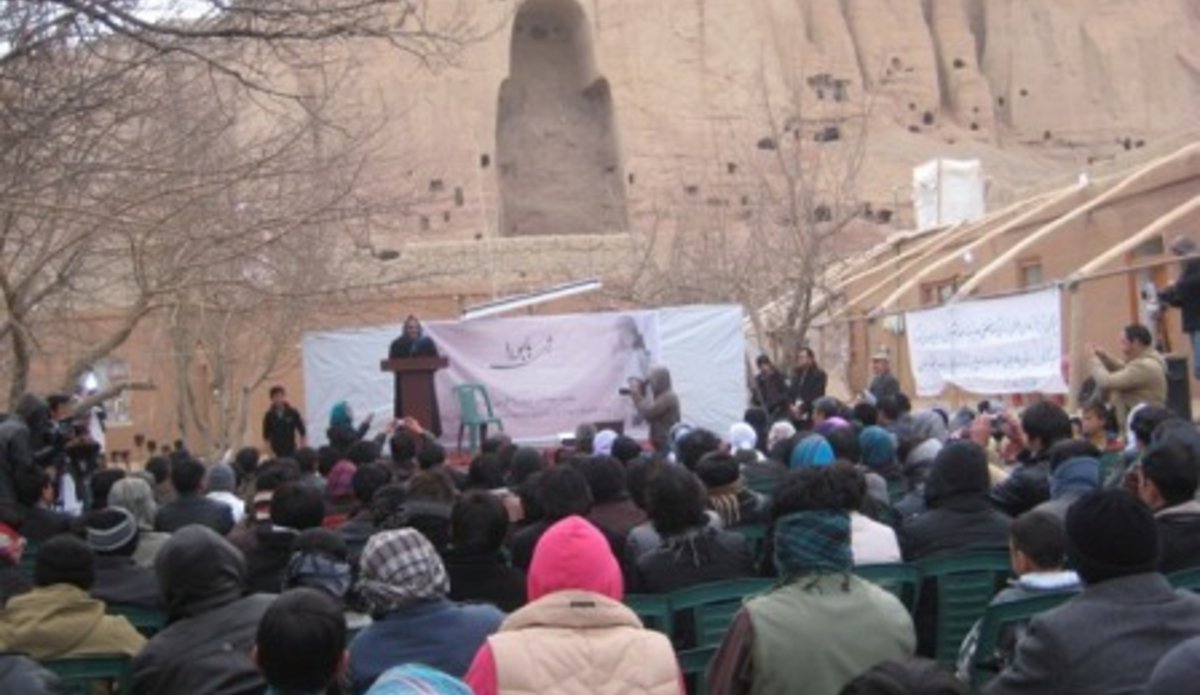Bamyan commemorates 12th anniversary of destruction of giant Buddha statues
BAMYAN - Members of the Bamyani community in Afghanistan commemorated earlier this week the 12th anniversary of the destruction of the renowned giant Buddha statues, carved into a cliff-side and known throughout the world as a symbol of the country’s cultural heritage.
“The terrorists wanted to eliminate the rich culture of the people but they didn’t understand and realize that weapons cannot do so,” the Provincial Governor of Bamyan, Dr. Habiba Sarabi, said in remarks extolling the importance of peace at a twilight ceremony held at the Bamyan caravansary, located across the road from the statues’ former location, on Monday.
Constructed in the 7th century and located in the Bamyan Valley, west of the capital, Kabul, and enclosed within the high mountains of the Hindu Kush, in Afghanistan’s central highlands, the two Buddha statues – one 55 metres high and the other 38 metres high – were part of the area’s cultural and archaeological landscape, which covers artistic and religious developments from the 1st to the 13th centuries.
Their destruction by the Taliban regime in March 2001 caused great international outrage, including from the United Nations.
“It is abominable to witness the cold and calculated destruction of cultural properties which were the heritage of the Afghan people, and, indeed, of the whole of humanity… The loss is irreversible. Everything possible must be done to stop further destruction,” said the Director-General of the UN Educational, Scientific and Cultural Organization (UNESCO), Koichiro Matsuura, at the time.
Attended by local residents, representatives of local authorities and civil society activists, Monday night’s event included a musical performance and a theatrical production in which actors portrayed a Taliban commander being asked why the group had destroyed the monuments and then being convinced that the act was unjustifiable and a tragedy for the culture of Afghanistan.
Attendees also viewed a video presentation of the world’s reaction to the Taliban regime’s announcement of its intention to destroy the statues, as well as the appeal of the United Nations for it to halt its plans.
The event was capped by the lighting of torches and a march across the road to the now-empty niches, where candles were lit inside a cave.
The ceremonial lighting of the giant caverns which formerly housed the ‘Big Buddha’ and the ‘Small Buddha’ has become an annual event in the province since the fall of the Taliban regime in 2001.
Monday night’s commemoration event was initiated by the Festival Volunteer Team, made up of youth groups from Bamyan and Kabul. In her remarks, Governor Sarabi also expressed her appreciation of the groups’ efforts and encouraged the audience to support such volunteerism, especially in the organization of events centred on preserving Bamyan’s cultural heritage.
In the wake of the giant Buddha statues’ destruction and following the inclusion of the Bamyan Valley – an area rich in Buddhist monastic ensembles and sanctuaries, as well as fortified structures from the region’s Islamic period – on the World Heritage in Danger List in 2003, UNESCO has led a comprehensive international effort to conserve the many fragments of the original Buddha statues, consolidate its cliffs and niches, and restore mural paintings within the Buddhist caves, as well as define a master plan to safeguard the Bamyan site.
 UN
UN






